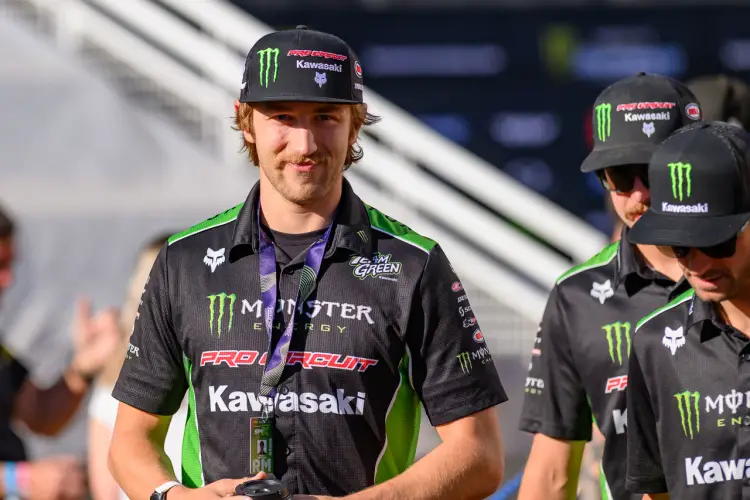When I first crossed paths with Garrett Marchbanks back in 2018, he was a fresh-faced pro rookie with a big future ahead of him, riding for the prestigious Monster Energy Pro Circuit Kawasaki team. Even then, his speed and raw talent were undeniable. However, like many young riders, Marchbanks’ path was soon riddled with setbacks—injuries that slowed his momentum and forced him to take an unplanned detour in his career.
Despite the challenges, Garrett still made an early mark on the sport by earning the 2019 250 Supercross Rookie of the Year title. It was a sign of what was possible when he could stay healthy. But the motocross world can be unforgiving, and soon after, he found himself without a spot on Mitch Payton’s Pro Circuit squad.
Rather than fade from the spotlight, Marchbanks took the independent route, joining the privateer Club MX/FXR/Yamaha team. There, he showed incredible versatility, competing in both the 250 and 450 classes. Many in the paddock believed that with his size and build, the 450 class might actually be his natural home. Still, Garrett’s determination to prove himself in the 250 class never wavered.
Fast forward to 2025, and Garrett is back with Monster Energy Pro Circuit Kawasaki for his second stint—and this time, he’s making every lap count. The Utah native has demonstrated that he has not only the speed but also the consistency to succeed at the highest level in the 250 ranks.
One of the most talked-about aspects of Marchbanks’ season has been his racecraft. While his starts have been far from ideal—something even he acknowledges—it’s been remarkable to watch the sheer number of riders he passes during a moto. His ability to slice through the pack and claw his way into contention has made him a fan favorite and a nightmare for his competition.
This summer has been especially rewarding for Marchbanks. He earned his first career motocross podium at Washougal, a moment that solidified his comeback narrative. Following that up with a gritty fourth-place finish at Ironman further proved that his results are no fluke. As it stands, Garrett is holding a strong third place in the 250 Motocross Championship standings, a position that reflects both his consistency and his growing confidence.
Marchbanks’ journey has not been without its doubters—there were plenty of questions about whether he could regain his form and be competitive at this level. But Garrett himself never questioned his ability. His blend of fitness, determination, and tactical race awareness has silenced the critics and reminded everyone that he’s here to contend.
Off the track, Marchbanks remains one of the most approachable riders in the pro pits, always willing to chat with fans and take a moment for the people who support him. With the season still unfolding and Garrett hinting that “we have some news coming out soon,” there’s a sense that this is just the beginning of his latest chapter.
From promising rookie to seasoned fighter, Garrett Marchbanks is proving that resilience is as important as raw speed in motocross—and he’s got plenty of both.

